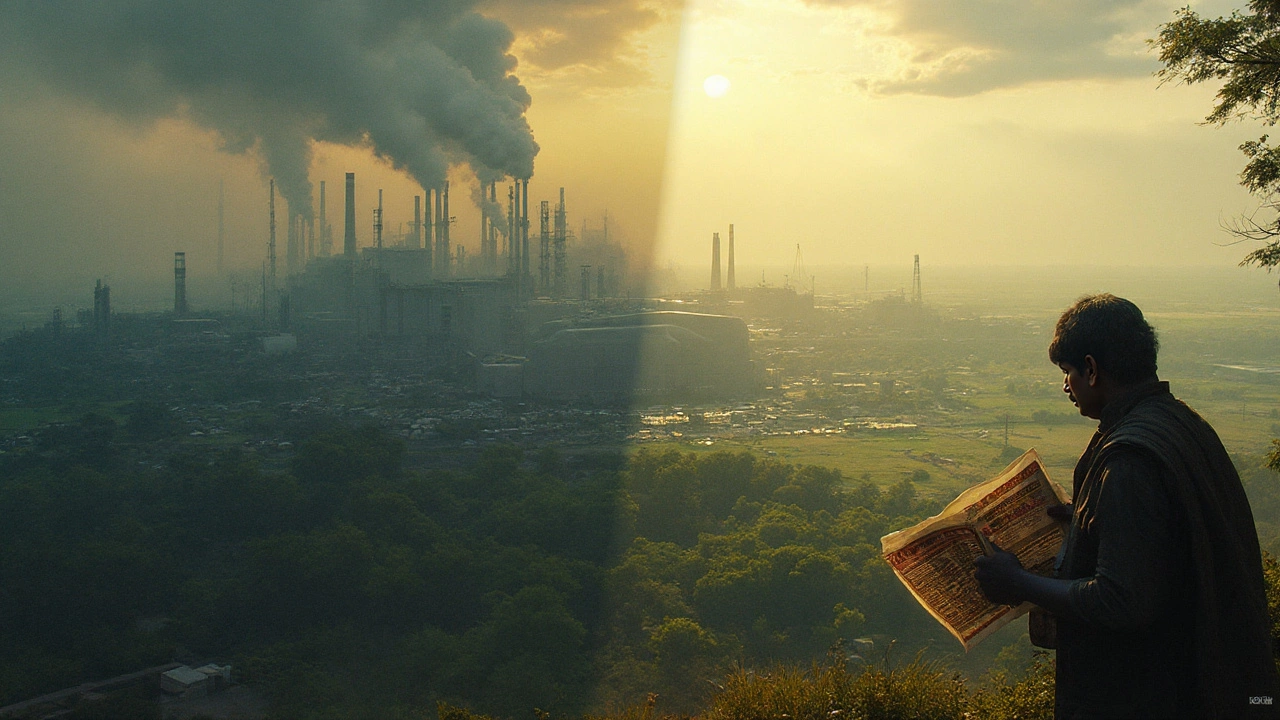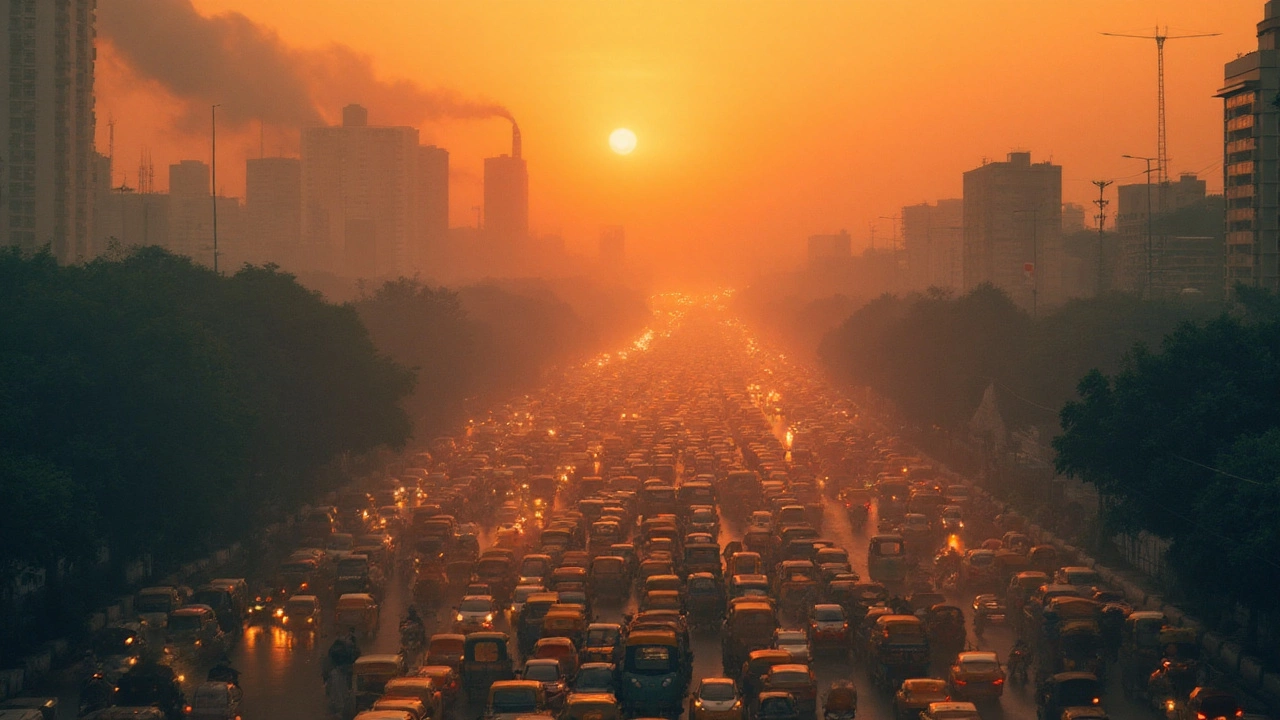Buckle up: the world’s hunger for energy doesn’t sleep, and fossil fuels are still at the center of that appetite. It’s easy to blame big companies or politicians, but the real story is messier—and much bigger. Most electricity, most cars, most manufacturing, and even airplane travel still chew through oil, coal, and gas. But which country burns through those fuels fastest? The answer might seem obvious, but dig a little deeper and you run into surprises. Some nations are fuel-guzzling giants thanks to sheer size, population, or their powerhouse economies. Others are racing up the ranks.
How We Measure Fossil Fuel Use—And Why It Matters
So, who decides who’s the fossil fuel champion? Usually, experts look at total consumption: how many tons or barrels of fossil fuel a country burns in a year. Another angle is carbon emissions—since burning fossil fuels dumps CO2 into the air. But there’s also per capita use, which measures how much each person uses on average. The context isn’t just for trivia nerds; it shapes climate agreements, fuels global politics, and sets the tone for clean energy battles. For example, when you see headlines about conferences like COP29, they often boil down to disagreements over these numbers: who’s responsible, who should cut back more, and who pays for past pollution.
The most widely trusted data comes from BP, the International Energy Agency (IEA), and the U.S. Energy Information Administration (EIA). They gather mountains of raw numbers and turn them into easy-to-read stats. Here’s how world fossil fuel consumption stacks up for the most recent year on record—2024 hasn’t fully wrapped up, but last year’s big movers are locked in:
| Country | Total Fossil Fuel Consumption (Million Tons Oil Equivalent, 2023) | Global % Share |
|---|---|---|
| China | 4,740 | 25% |
| United States | 3,670 | 19% |
| India | 1,320 | 7% |
| Russia | 960 | 5% |
| Japan | 800 | 4% |
| Rest of World | 7,620 | 40% |
But here’s something that trips people up: the biggest total users aren’t always the biggest per person. For instance, Saudi Arabia actually outpaces China per capita, thanks to heavy air conditioning and fuel subsidies.
China: The Epicenter of Fossil Fuel Use
Ready for a shocker? China isn’t just the world’s factory; it’s also the undisputed king of fossil fuel burning right now. Back in 2000, China used less than half the fossil fuels of the United States. Fast-forward to 2023, and it vastly outpaces the U.S. What changed? Economic boom, sure, but the real story is in urbanization and manufacturing. Remember all those electronics, clothing, and solar panels stamped "Made in China?" Every stage of production, from mining minerals to running factory machines, demands massive amounts of energy. Even now, about two-thirds of China’s electricity is still produced by coal plants. That’s a problem, since coal is the dirtiest mainstream fossil fuel—way more carbon-intensive than oil or natural gas.
In 2023, China’s carbon dioxide emissions reached nearly 12.1 billion metric tons. To visualize this, try picturing every car on the planet idling for hours, but all happening within China’s borders. The Chinese government is working on clean energy and claims it’ll peak emissions before 2030, but so far, fossil fuel use is still rising. Wild detail: China builds roughly one coal-fired power plant each month, sometimes even faster.
What about the daily experience for people there? Anyone who’s visited Beijing can tell you about “airpocalypses”—months where the air turned thick and gray, masking the skyline. It isn’t just a health scare. Cities sometimes grind to a halt to cut smog. So, yes, China leads in solar and wind but isn’t ready to quit coal and oil just yet.

United States: Still a Major Fossil Fuel Player
You might assume America’s fossil fuel story peaked ages ago, but the U.S. is far from giving up its spot near the top. Despite strong pushes for electric cars and renewables, the U.S. used nearly 3.7 billion tons of oil equivalent energy in 2023. The biggest culprit? Transportation. Wide highways, sprawling suburbs, and a culture hooked on big cars and trucks mean gasoline and diesel are going nowhere fast. Seriously, pickup trucks and SUVs are top sellers every year.
Here are some wild numbers: The U.S. only makes up about 4% of the world’s population but uses about 19% of its fossil fuel energy. Shocking? Maybe not if you’ve seen a summer in Las Vegas, or noticed that flights crisscrossing America often burn more fuel than entire nations. But there’s another twist: U.S. natural gas production has soared, and gas is now the leading source of electricity. That’s cleaner than coal, but it’s not carbon neutral—it still contributes big time to the climate problem.
The U.S. has made some progress. Emissions fell about 3% in 2022 thanks to shifting from coal to gas and renewables, but a lot depends on policies and lifestyle changes. Fun fact: even with tons of electric vehicles hitting the streets, gasoline consumption isn’t dropping much. Americans are driving more, and the vehicles are getting heavier, erasing the clean electric gains on a national scale.
India and the Fast-Rising Challengers
Don’t sleep on India: this country is surging up the energy charts. With one of the fastest-growing economies and over 1.4 billion people, India’s demand for power is booming. Factories running full-tilt, more people buying cars and air conditioners, and cities growing at warp speed all push fossil fuel use even higher. In 2023, India overtook the EU as the world’s third-largest consumer of energy. Coal is king in India, making up more than half of its total energy use. The government wants more renewables, but keeping the lights on for millions means fossil fuels still dominate today.
But here’s the eye-opener: per person, India’s fossil fuel use is still much lower than in richer countries. Many Indian homes rely on traditional fuels (wood, dung, crop waste), especially in rural areas. Still, the country’s coal use keeps climbing, especially for electricity and cement. Scientists estimate that every year, India’s rise adds the equivalent energy use of a medium-sized European nation. Imagine the world adding another Spain every few years in terms of energy demand—and you’ve got India’s situation in a nutshell.
If trends hold, by the early 2030s India could rival the U.S. in total fossil fuel use. That’s despite running more solar and building massive wind farms. The scale of the country is just that enormous. You can see the impacts up close too: heat waves in Delhi regularly force power cuts, and air pollution spikes can close schools for days. The world’s second-most populated country won’t leave the fossil fuel leaderboard any time soon.

The Ripple Effect: Why Fossil Fuel Burning Isn’t Just a Numbers Game
Okay, so now you know who burns the most. But what’s the fallout? Burning fossil fuels releases endless tons of greenhouse gases, worsening climate change. That’s the big headline, but look closer and the ripples hit everywhere. Coastal cities brace for rising seas. Farms shift their crops or get wiped out by drought. Mega-storms get more common, with billions in damages every year. Then there’s the local pain—think of smog alerts in Los Angeles, heat domes hugging Texas, or coal dust storms in Chinese mining provinces.
There’s also a strong social and political angle. Countries with big fossil fuel appetites often have powerful industries lobbying against rapid change. It’s tough to tell millions of workers to abandon oil fields or call for entire cities to overhaul their infrastructure overnight. Plus, fossil fuels mean cash—oil and gas exports bankroll Russia’s and Saudi Arabia’s governments, making talk of quick transitions tricky. For lower-income countries, energy access trumps everything. Telling a nation where 20% of kids lack electricity to go 100% solar overnight just isn’t realistic.
Still, hope isn’t lost. Even the largest polluters are cleaning up their act, thanks to pressure from citizens, international groups, and the economics of cheaper renewables. Renewable energy is now the cheapest form of new power in most places, and electric vehicles are closing the cost gap fast. But the biggest question remains: can countries like China and the U.S. swap oil, gas, and coal for green sources fast enough to slow the climate train?
Expert tip: if you want to track these shifts yourself, BP’s Statistical Review of World Energy or IEA’s Global Energy Review serve as solid real-time trackers. Also, keep an eye on new carbon border taxes—some countries charge extra for imports with high embedded fossil fuel emissions. That changes the playing field for global trade and could shake up the leaderboard of top-consuming countries within this decade.





